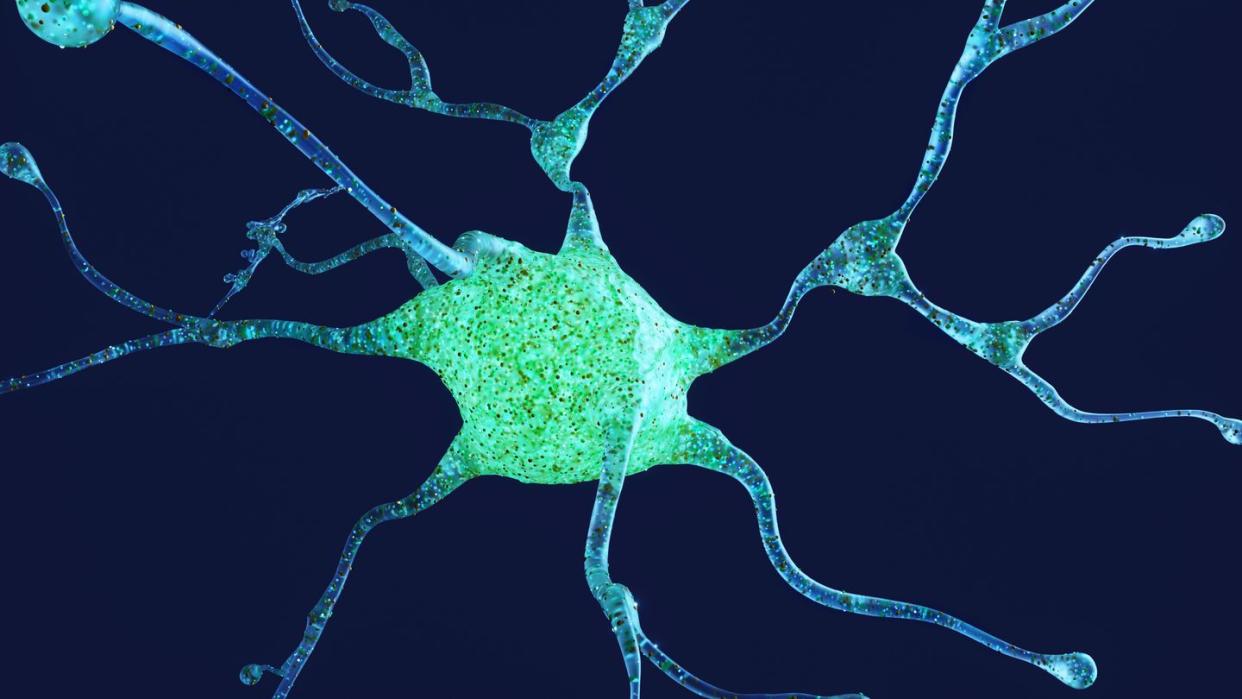Scientists Built a Working Human Brain Cell Out of Salt and Water

"Hearst Magazines and Yahoo may earn commission or revenue on some items through these links."
Scientists have long mimicked human synapses using conventional solid materials, but new research attempts to recreate using extremely basic ingredients: water and salt.
By recreating human synapses using the same medium as our biological brains, devices known as iontronic memristors could mimic the short-term plasticity found in our brains.
While this neuromorphic (brain-like) computing is in its infancy, multi-million-dollar projects attempting to copy the brain’s neurological abilities show that an aqueous memristor could unlock a new level of computing power and efficiency.
Computers have made amazing technological leaps since ENIAC crunched its first ones and zeroes back in the 1940s. In less than a century, computers that once filled entire rooms are now infinitely faster, more efficient, and can even be worn on our faces (for some reason). While that immense progress in nearly a human lifetime is an astounding engineering achievement, it doesn’t even compare to the steady work of billions of years of evolution that resulted in one of the most impressive computational devices of all: the human brain.
Of course, mimicking nature is a well-known strategy in fields like materials science, medicine, and even agriculture. So, couldn’t copying the human brain lead to breakthroughs in artificial computing? The short answer is “yes,” and the long answer is “very much, yes.”
Scientists from Utrecht University in the Netherlands, while exploring the nascent field of iontronic neuromorphic computing, have successfully created an artificial device that mimics the synapses of the human brain. The device—only 150 to 200 micrometers (the width of a human hair is around 100 micrometers) across—relies on salt and water for processing intricate information, much like our brains. Details surrounding the creation of this first-of-its-kind device were published last week in the journal Proceedings of the National Academy of Sciences (PNAS).
“While artificial synapses capable of processing complex information already exist based on solid materials, we now show for the first time that this feat can also be accomplished using water and salt,” Utrecht University Ph.D. candidate and lead author of the study Tim Kamsma said in a press statement. “We are effectively replicating neuronal behavior using a system that employs the same medium as the brain.”
Developed by scientists in South Korea, the device—known as an iontronic memristor (memory resistor)—is shaped like a cone and is packed with a solution of water and salt. When the device receives an electrical impulse, ions migrate through the channel, which changes the surrounding ion environment. If an impulse is particularly strong or long, the conductivity of the channel adjusts, which strengthens or weakens neuron connection.
The scientists also discovered that the length of the channel impacts how long it takes for changes to dissipate. According to Kamsma, this means that iontronic memristors could be tailored to remember previous electrical charges, “akin to the synaptic mechanisms observed in our brains.”
Due to go online in 2024, an Australian-based supercomputer known as DeepSouth aims to be the first machine to mimic the synapses of the human brain. While this effort is concentrated on conventional solid materials, Kamsma’s work shows that an aqueous memristor could be better suited for reproducing our brain’s short-term synaptic plasticity.
“It represents a crucial advancement toward computers not only capable of mimicking the communication patterns of the human brain but also utilizing the same medium,” Kamsma said. “Perhaps this will ultimately pave the way for computing systems that replicate the extraordinary capabilities of the human brain more faithfully.”
In other words, it’s computing as the way nature intended.
You Might Also Like

